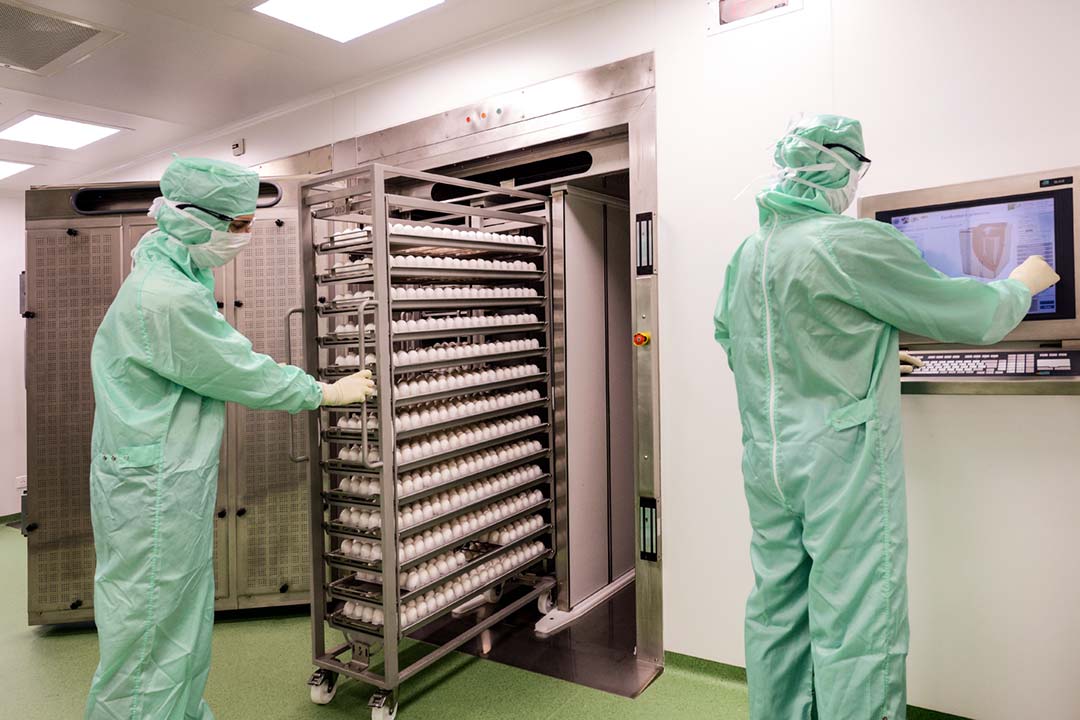Six things you need to know about how vaccines can help prevent antimicrobial resistance
Treating infections can drive antimicrobial resistance; using vaccines to prevent infection can be crucial to reduce resistance and save lives.
- 17 May 2024
- 4 min read
- by Priya Joi

Microbes such as bacteria, viruses, parasites and fungi are increasingly developing resistance to the drugs used to treat them. This growing threat is set to be one of the greatest dangers to public health in the coming years.
Vaccines have already prevented millions of deaths in the past few decades. In this new era where many pathogens are evolving to evade treatment, vaccines are going to be more important than ever in keeping us safe.
A new Gavi Insight paper out this week details just how vital vaccines will be in the fight against antimicrobial resistance (AMR).
1. Vaccines slow or suppress the evolution of resistance
Resistance to drugs develops the more a treatment is used. The more a disease is exposed to a drug, the more likely that strains that can evade this drug will survive and thrive, which is how resistance develops.
Thus, the more treatments such as antibiotics are used, the more likely that a pathogen will evolve to be able to evade it. If, however, a person is vaccinated against a certain pathogen, they are less likely to need treatment and therefore less likely to develop resistance.
While new treatments are being developed all the time, bringing a new treatment to market is an arduous and complicated process. Even with millions pumped into drug development, many things can go wrong from the initial development of a potential candidate to a medicine being able to be given to people.
2. Vaccines prevent infections and build herd immunity
Vaccines can prevent a wide range of infections, including bacterial infections either acquired in the general population, or worse, infections caught in hospitals. Hospital-acquired infections can be worse, because they are infecting people who are already sick and have weak immune systems.
When most of the population is vaccinated, this can lead to herd immunity – the indirect protection from an infectious disease that happens when most individuals are immune to a disease – further reducing the risk of infection and development of resistance.
3. Vaccines can reduce the misdiagnosis and misuse of antibiotics for viral illnesses
Immunisation can prevent viral infections, which is important because antibiotics are often prescribed incorrectly to treat these infections, even though they will not help.
This improper prescribing can happen when diagnostics are in short supply and doctors prescribe antibiotics "just in case".
4. There is hard evidence that vaccines work to mitigate antimicrobial resistance
Research by the One Health Trust found that:
- In Indonesia, reaching 85% pneumococcal conjugate vaccine (PCV) coverage over two years, followed by 99% coverage over three years, could potentially avert antibiotic treatment failures by up to 13.8%.
- Increased PCV coverage has averted approximately 718,100 treatment failures, resulting in a 27.8% reduction in AMR-related deaths between 2011 to 2017.
- Rotavirus vaccines at 77% coverage in children under two years old in 18 lower- to middle-income countries (LMICs) could avert 13.6 million (31%) episodes of antibiotic-treated diarrhoea annually.
- At 70% coverage, PCV administration in children under two years old across 18 LMICs could avert 23.8 million antibiotic-treated acute respira3tory infections annually.
5. To truly realise the impact of vaccination, we need to get routine immunisation back on track
The value of vaccination is clear, but there is work to do to get routine vaccines out to the most vulnerable children in the world.
- The number of children who have not been reached by routine immunisation services – known as ‘zero-dose’ children – reduced from 18.1 million in 2021 to 14.3 million in 2022. This, however, is still above the 2019 pre-pandemic level of 12.9 million zero-dose children.
- Although coverage of the third dose of diphtheria, tetanus and pertussis-containing vaccine (DTP3) recovered to 84% in 2022, this still left 205 million children vulnerable to vaccine-preventable diseases.
6. Gavi recommends that immunisation is integrated into AMR strategies
The insight paper makes several important recommendations, including integrating vaccines into national AMR strategies and ensuring that implementation plans for vaccines and AMR are aligned. The paper also calls for strengthened AMR surveillance systems to garner more accurate data on AMR and the contributory factors to AMR, including the preventive role of immunisation.
More from Priya Joi
Recommended for you







